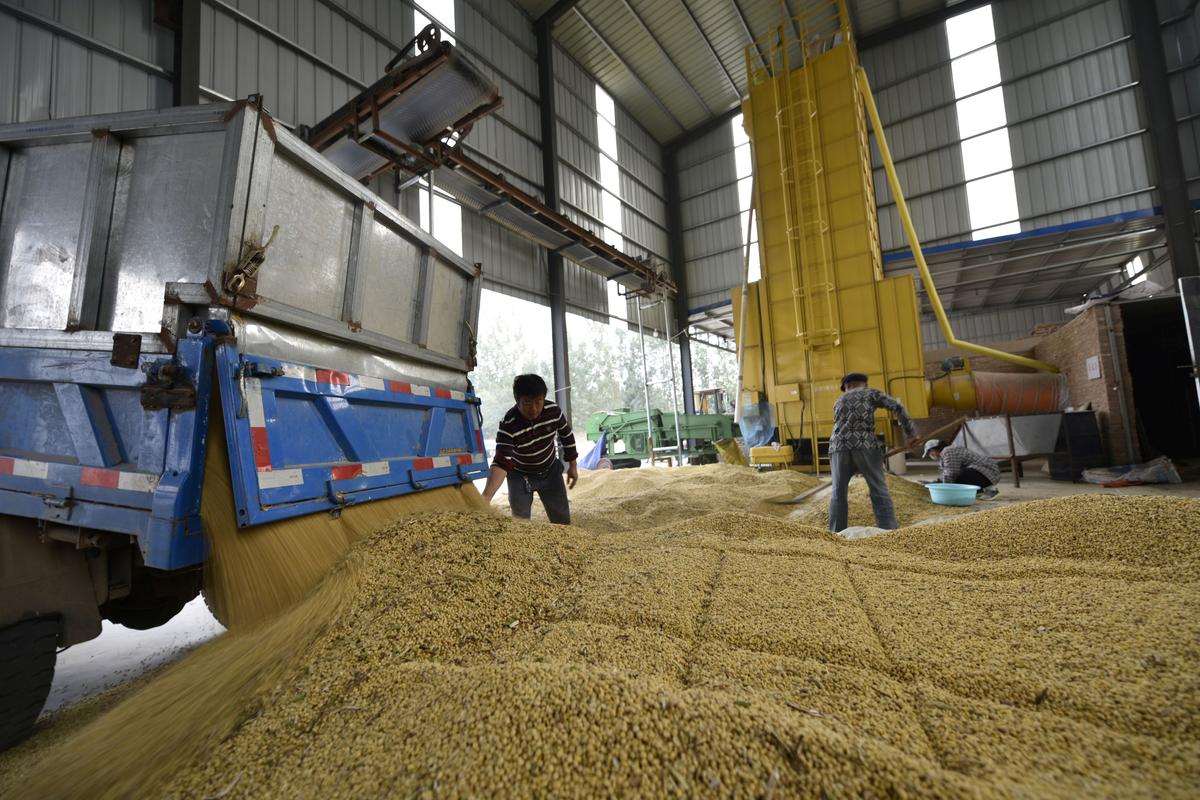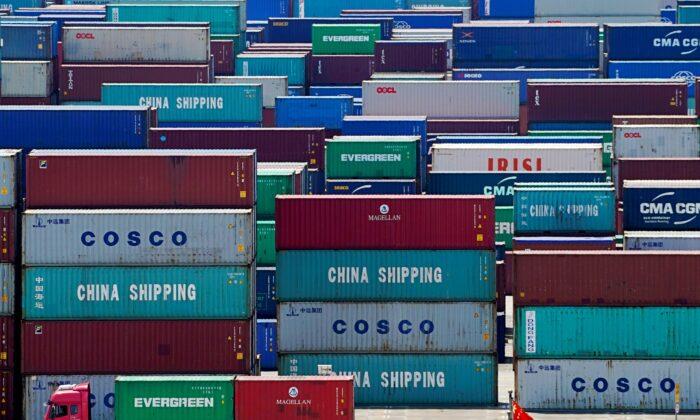BEIJING—China on Feb. 6 said it would halve additional tariffs levied against 1,717 U.S. goods last year, following the signing of a Phase 1 deal that brought a truce to a bruising trade war between the world’s two largest economies.
While the announcement reciprocates the U.S. commitment under the deal, it is also seen by analysts as a move by Beijing to boost confidence amid a coronavirus outbreak that has disrupted businesses and hit investor sentiment.
Casting doubts over the immediate outlook, however, was the prospect raised in a local media report that Beijing could invoke a disaster-related clause in the trade agreement, which might allow it to avoid repercussions even if it cannot fully meet the targeted purchases of U.S. goods and services for 2020.
China’s finance ministry said in a statement that from 0501 GMT on Feb. 14, additional tariffs levied on some goods will be cut to 5 percent from 10 percent and others lowered to 2.5 percent from 5 percent.
The ministry did not state the value of the goods affected by the decision, but the products benefiting from the new rule are part of the $75 billion of goods that China announced last year that it would impose 5 percent to 10 percent tariffs on, which came into effect on Sept. 1.
In a separate statement, the finance ministry said the tariffs reduction corresponds with those announced by the United States on Chinese goods, which were also scheduled for Feb. 14.
Further adjustments would depend on the development of the bilateral economic and trade situation, the ministry said.
The reductions will cut tariffs on soybeans from 30 percent to 27.5 percent, although some traders say the impact could be limited as the 25 percent tariffs remains in place. Duties on crude oil will fall to 2.5 percent from 5 percent that was imposed in September.
The remaining tariffs were scheduled to kick in Dec. 15 but were suspended due to the interim trade deal.
“Any move to de-escalate is always good. Especially, when the market is overwhelmed by the news about virus, good news about tariff is refreshing,” said Tommy Xie, head of Greater China research at OCBC Bank in Singapore.

The news was positive for financial markets and comes as Beijing seeks to shore up investor and business confidence in China as a virus outbreak casts deep uncertainty over the economic outlook.
Potential Delays
While the proposed tariff cuts point to clear progress in Sino-U.S. trade ties, the virus outbreak has cast doubt over just how soon the Phase 1 deal could help the China’s slowing economy.China’s Global Times on Thursday reported Beijing is considering using a disaster-related clause in the Phase 1 deal due to the coronavirus outbreak, citing an unnamed Chinese trade expert close to the government.
The Phase 1 deal text contains a disaster clause that allows for implementation delays in the event of “natural disaster or other unforeseeable event.”
U.S. Agriculture Secretary Sonny Perdue on Wednesday warned the United States would have to be tolerant if the fast-spreading coronavirus impaired China’s ability to increase purchases of U.S. farm products under the signed trade deal.
Chinese foreign ministry spokeswoman Hua Chunying, when asked about the Global Times report at a daily briefing on Thursday, referred the matter to the relevant departments.
Some analysts had said following the trade deal that China may need to roll back some of the tariffs on U.S. goods such as soybeans and crude oil in order to meet its purchasing commitments. Other analysts also noted such moves are expected to cushion faltering growth at home.
“Under the phase 1 deal, China has to meet a tough target to increase U.S. import by $100 billion this year, so a measure like this was necessary and expected,” said Tomo-o Kinoshita, global market strategist at Invesco Asset Management.
“But at the same time, that they did this now points to their desire to support Chinese companies as the coronavirus epidemic will obviously deal a huge blow to China’s growth,” he added.






Friends Read Free